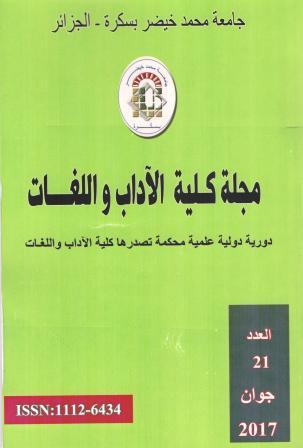فهرسة المخطوطات العربية ماهيتها، أنواعها، واقعها ومدى نجاعتها
Résumé
Abstract:
Possibly the manuscripts were
not effortless at the beginning of their
emergence in terms of selecting the
manuscript and finding a copy, also to see
the investigator she offers more than
others, did not argue the matter to what
has become necessary later, the
knowledge of the investigator and mave
on the Arab bibliographic for
consideration that had been achieved and
what is determined to be achieved or not.
With the enormous popularity of
achieving Arab heritage, there was an
urgent need there emerged to create
specialized centers in the preservation of
manuscripts and indexation. Then the
Arab library became full of books and
manuscripts. These indexes were not
without benefits and facilities for
researchers, but it has always been a
deficient knowledge of all the elements of
cataloging manuscripts due to the nature
of the paper, and the lack of possibility
foram easy modification, manipulation,
refresh and renewal.
الملخص
لعل تحقيق المخطوطات كان أمرا هينا في بداية ظهوره من ناحية انتقاء المخطوط وإيجاد نسخه، ولمعرفة المحقق أنه يُقْدم على ما لم يقترب منه غيره، فلم يحتج الأمر إلى ما أصبح ضروريا فيما بعد، وهو معرفة المحقق واطلاعه على البيبليوغرافيات العربية لينظر إن كان قد تم تحقيق ما هو عازم على تحقيقه أم لا. ومع الإقبال الهائل على تحقيق التراث العربي ظهرت ضرورة ملحة لإنشاء مراكز متخصصة في الحفاظ على المخطوطات وفهرستها. ثم لم تلبث المكتبة العربية طويلا حتى صارت عامرة زاخرة بكتب فهارس المخطوطات. لم تخل تلك الفهارس من فوائد وتسهيلات على الباحثين، غير أنها ظلت دائما قاصرة عن الإلمام بجميع عناصر فهرسة المخطوطات نظرا لطابعها الورقي، وعدم وجود إمكانية يسيرة للتعديل والتحديت والمتابعة والتجديد.


